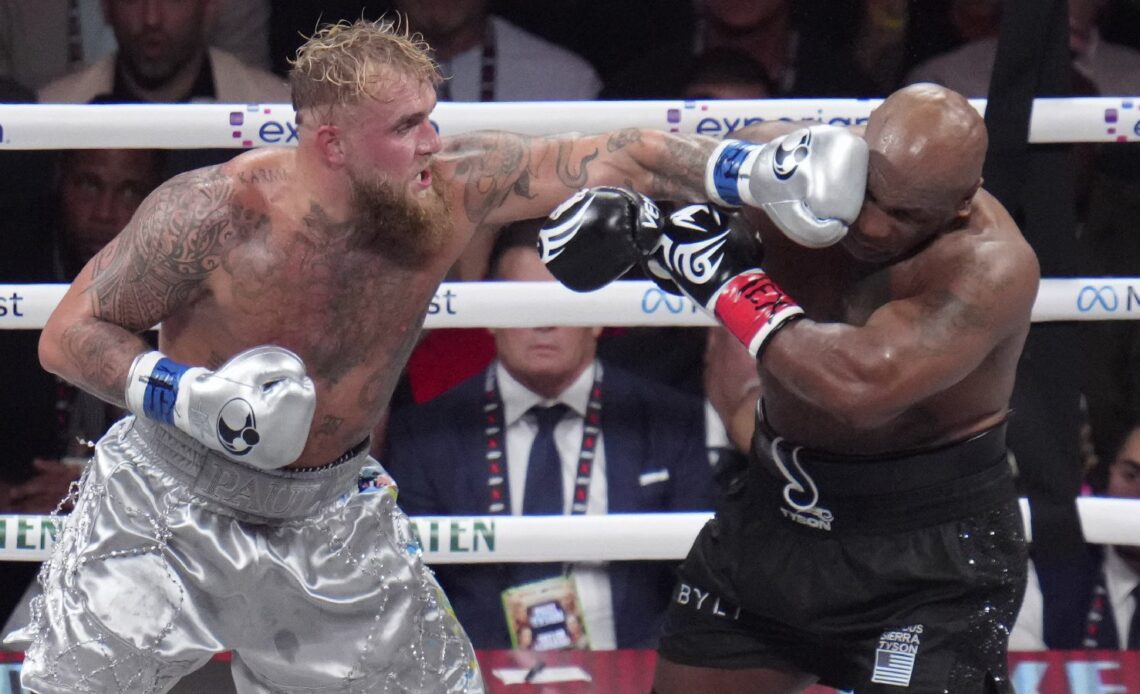In the ever-evolving landscape of combat sports, few matchups have captured global attention quite like the impending clash between boxing legend Mike Tyson and YouTube sensation Jake Paul. This fight is not just a contest of fists; it’s a cultural phenomenon that redefines the boundaries between tradition and modernity. As one of the most controversial fights in history, this bout has sparked debates across social media, sports forums, and even traditional news outlets. With Tyson representing the golden era of boxing and Paul embodying the rise of influencer-driven entertainment, their showdown is more than just a spectacle—it’s a reflection of how far both industries have come and where they might be headed.
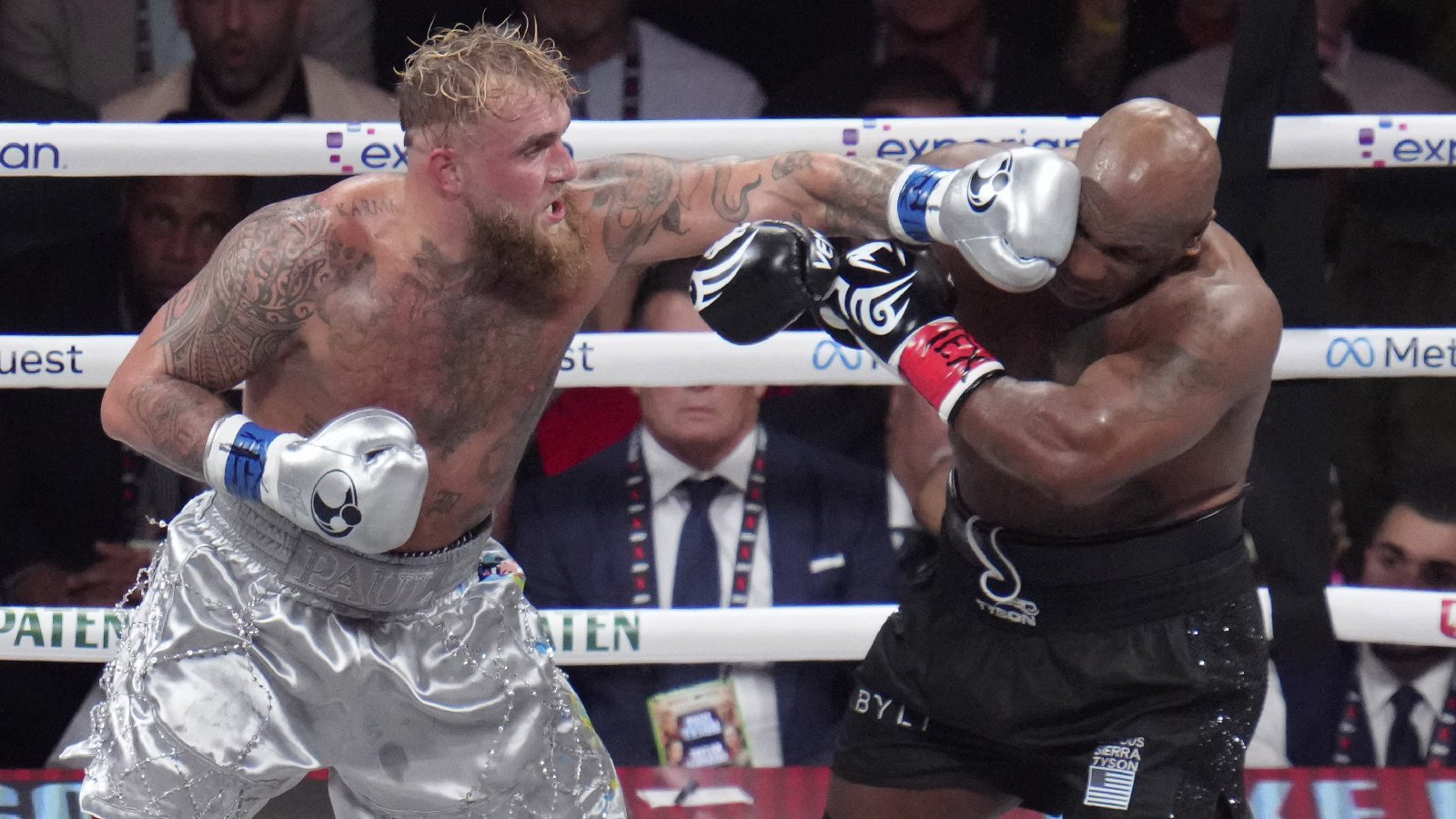
To understand the magnitude of this matchup, we must first delve into the legacy of Mike Tyson. Known as “Iron Mike,” Tyson revolutionized boxing during his prime with his ferocious power, lightning-fast reflexs, and an intimidating presence that struck fear into opponents before they even stepped into the ring. Born in Brooklyn, New York, Tyson rose from humble beginnings to become the youngest heavyweight champion in history at just 20 years old. His career was marked by iconic victories over legends such as Larry Holmes, Michael Spinks, and Frank Bruno, cementing his status as one of the greatest boxers of all time.
Tyson’s fighting style was characterized by his explosive speed, devastating knockout power, and relentless aggression. He was known for his signature peek-a-boo defense—a technique taught to him by his legendary trainer, Cus D’Amato—which allowed him to close distance quickly while minimizing damage. This approach made him nearly invincible during his early years, earning him a reputation as one of the most feared fighters in the sport’s history.
However, Tyson’s journey wasn’t without its challenges. Legal troubles, personal struggles, and highly publicized controversies often overshadowed his achievements outside the ring. From his infamous conviction for rape in 1992 to his biting incident against Evander Holyfield in 1997, Tyson’s life became a rollercoaster of highs and lows. Yet, despite these setbacks, Tyson’s resilience and ability to reinvent himself have kept him relevant decades after his retirement from professional boxing. Today, he stands as a symbol of grit, determination, and the enduring appeal of traditional boxing—a sport steeped in history and discipline.
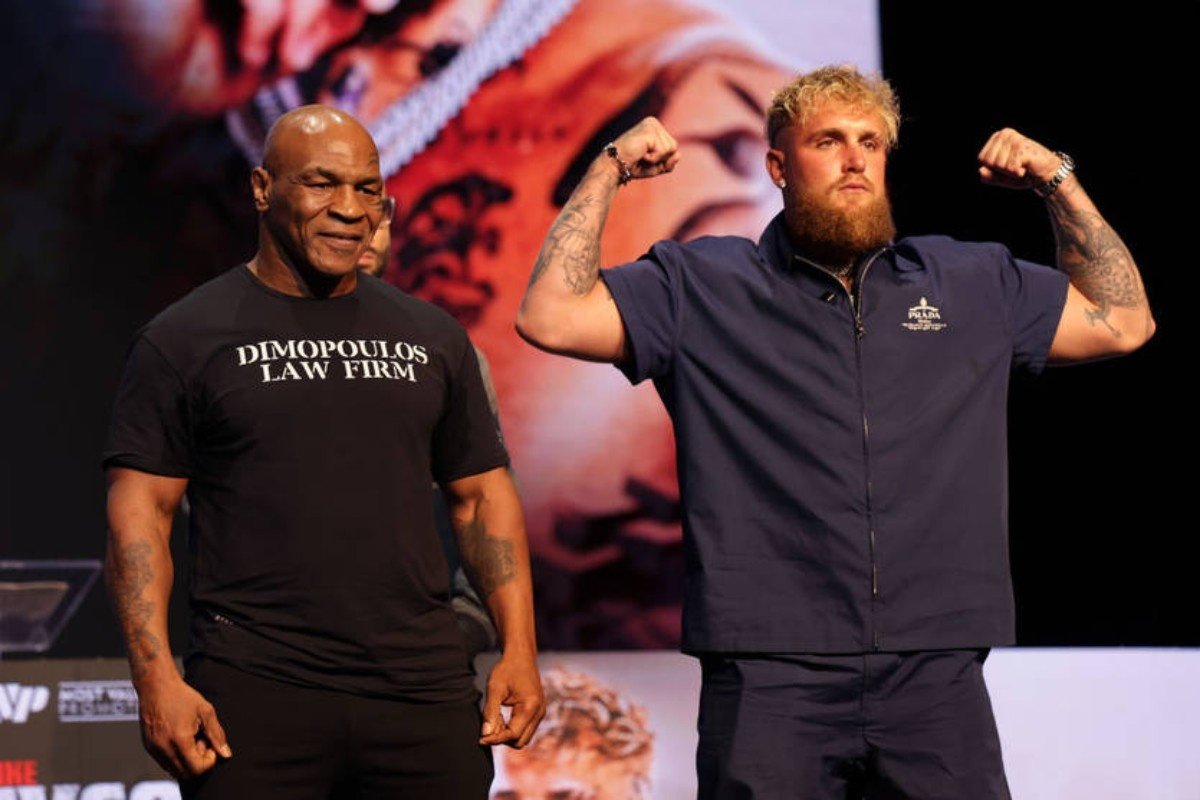
Tyson’s decision to step back into the ring against Jake Paul is seen by many as a testament to his enduring passion for the sport. At 57 years old, he may no longer possess the same physical prowess that once made him unstoppable, but his name alone carries enough weight to draw millions of viewers worldwide. For fans of classic boxing, this fight represents an opportunity to witness a living legend in action—one last hurrah before the curtain falls on his storied career.
On the other side of the ring stands Jake Paul, a polarizing figure who has become synonymous with the new wave of combat sports. Unlike Tyson, whose fame stems from decades of dedication to boxing, Paul’s rise to prominence began on the internet. Starting as a Vine star and later transitioning to YouTube, Paul built a massive following through outrageous stunts, vlogs, and viral content. However, it was his foray into boxing that truly transformed him into a household name.
Paul’s first few fights were met with skepticism. Critics dismissed him as a novelty act—a celebrity cashing in on his online fame without any real skill or respect for the sport. But as he continued to train and improve, Paul proved doubters wrong by defeating seasoned opponents like Ben Askren and Tyron Woodley. While his technique may not rival that of elite boxers, his athleticism, stamina, and willingness to take risks have earned him a legitimate place in the world of combat sports.
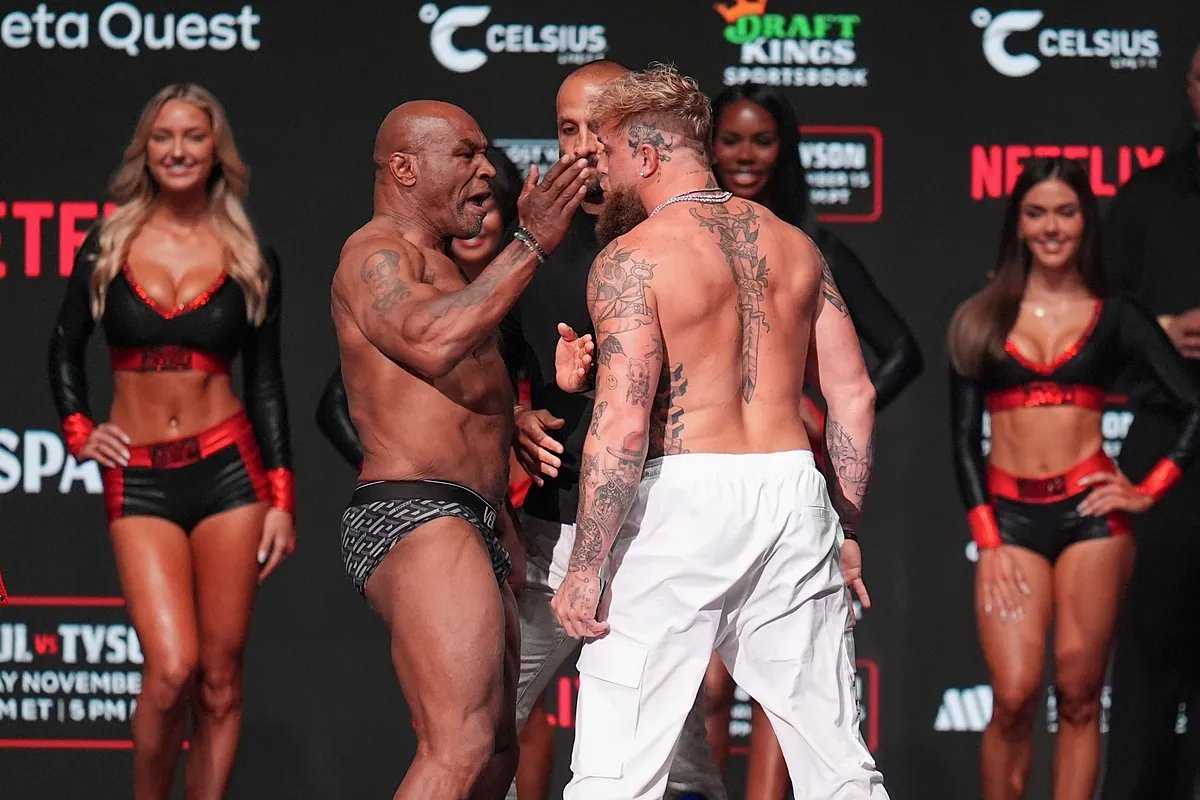
What sets Jake Paul apart is his ability to leverage modern platforms to promote fights and engage audiences. Through social media, he has turned boxing matches into multimedia events, complete with dramatic press conferences, behind-the-scenes documentaries, and interactive fan experiences. This approach has attracted a younger demographic that might otherwise never tune into a traditional boxing match, effectively bridging the gap between sports and entertainment.
For Paul, fighting Mike Tyson isn’t just about proving himself as a legitimate boxer—it’s about solidifying his position as a trailblazer in the modern era of combat sports. By stepping into the ring with a legend, he hopes to elevate his status while simultaneously challenging the conventions of what it means to be a fighter. In many ways, Paul represents the future of sports—a hybrid athlete-entertainer who thrives in the digital age.
At its core, the Tyson vs. Paul fight is a clash of eras—a collision of two vastly different worlds that rarely intersect. On one hand, you have Tyson, a product of the rigorous training regimens and unwavering discipline that define traditional boxing. On the other, you have Paul, who embodies the fast-paced, digitally driven culture of today’s entertainment industry. Their contrasting backgrounds highlight the ongoing tension between preserving the sanctity of a timeless sport and embracing the innovations brought about by the digital age.
Critics argue that allowing influencers like Jake Paul to compete against established athletes undermines the integrity of boxing. They claim that these exhibitions prioritize profit over prestige, turning what was once a sacred art form into a circus act designed to generate clicks and views. Supporters, however, see it differently. They believe that crossover fights like this bring much-needed attention to a sport that has struggled to maintain relevance in recent years. In an era where streaming services and short-form content dominate consumer habits, adapting to changing trends is essential for survival.

This debate extends beyond boxing itself. It raises important questions about the future of sports and entertainment as a whole. Should purists hold onto traditions at the risk of alienating younger audiences? Or should industries evolve to meet the demands of a rapidly changing world? The Tyson vs. Paul fight serves as a microcosm of this larger conversation, forcing us to confront the uncomfortable reality that progress often comes at the expense of nostalgia.
One cannot discuss the Tyson vs. Paul matchup without acknowledging the brilliant marketing strategies that have fueled its hype. From the moment the fight was announced, both camps wasted no time in generating buzz. Social media played a pivotal role, with teasers, trailers, and cryptic posts keeping fans on edge. Press conferences turned into theatrical performances, complete with heated exchanges and bold predictions that only added fuel to the fire.
Jake Paul, in particular, excels at creating narratives that resonate with his audience. He knows how to craft a compelling story—one that pits the underdog against the giant, the newcomer against the veteran. This narrative appeals not only to his loyal fanbase but also to casual viewers who are drawn to the drama and unpredictability of the matchup. Meanwhile, Tyson’s involvement ensures that even those unfamiliar with Paul’s antics will tune in to see if the legend still has what it takes to dominate the ring.
The financial implications of this fight are staggering. Pay-per-view buys, merchandise sales, and sponsorship deals are expected to reach unprecedented levels, making it one of the highest-grossing events in combat sports history. This success underscores the growing influence of influencer culture and its ability to monetize virtually anything—even a seemingly mismatched fight between a retired champion and a YouTube star.
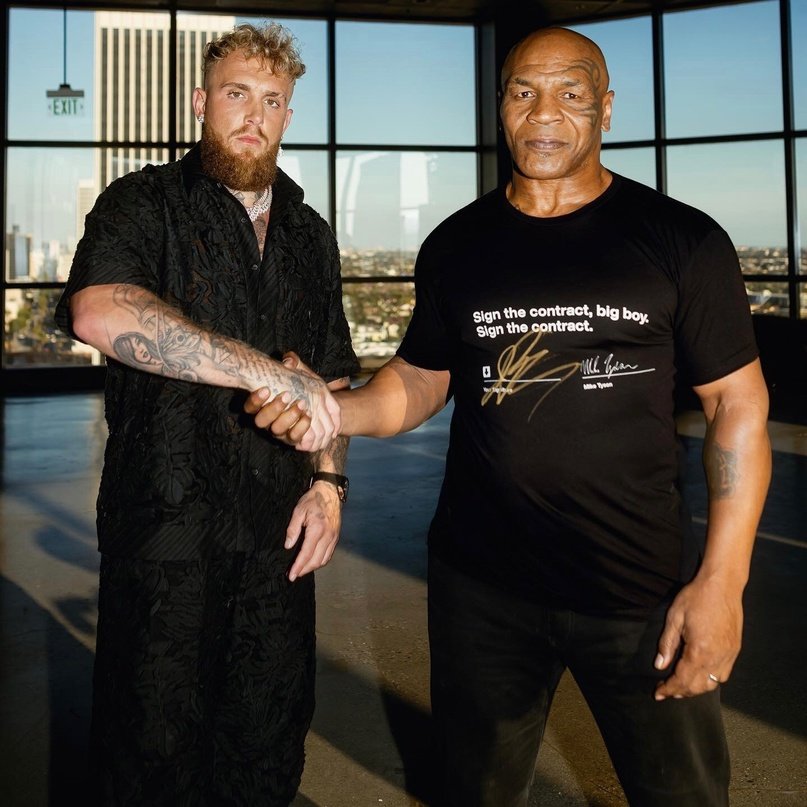
While the outcome of the fight will undoubtedly make headlines, the true significance lies in what it represents for the future of boxing and combat sports. For Mike Tyson, this is an opportunity to remind the world of his greatness while inspiring a new generation of fighters. For Jake Paul, it’s a chance to silence critics and prove that he belongs in the same conversation as some of the sport’s biggest names.
More broadly, this matchup highlights the shifting dynamics within the industry. As traditional gatekeepers lose influence, figures like Paul are stepping up to fill the void, using their platforms to shape the direction of the sport. Whether this is a positive or negative development remains to be seen, but one thing is certain: the lines between athlete, entertainer, and influencer are becoming increasingly blurred.
Ultimately, the Tyson vs. Paul fight is a testament to the power of storytelling and the universal appeal of competition. Regardless of who emerges victorious, the event will leave an indelible mark on the world of sports and entertainment, serving as a reminder that sometimes, the most unlikely matchups can produce the most unforgettable moments.
Beyond the physical aspects of the fight, the psychological battle between Tyson and Paul has been equally fascinating. Both fighters have employed mind games to gain a mental edge over their opponent. Tyson, with his decades of experience, knows how to intimidate opponents with his piercing gaze and commanding presence. During press conferences, he has often stared down Paul, attempting to unnerve the younger fighter with his aura of dominance.
Paul, on the other hand, has used his charisma and confidence to counteract Tyson’s intimidation tactics. He has openly mocked Tyson’s age and questioned whether the former champion still has the stamina to go the distance. These verbal jabs are not just for show—they’re part of a calculated strategy to plant seeds of doubt in Tyson’s mind and bolster his own confidence heading into the fight.
This psychological warfare adds another layer of intrigue to the matchup. Will Tyson’s experience and mental toughness prevail, or will Paul’s youthful bravado give him the upper hand? The answer may lie in how each fighter handles the pressure when the bell rings.
Both fighters have taken vastly different approaches to their training regimens, reflecting their respective styles and philosophies. Tyson, despite his age, has undergone intense conditioning to ensure he can withstand the rigors of a professional bout. His training includes sparring sessions with younger fighters, strength and conditioning workouts, and a strict diet designed to optimize his performance. Tyson’s preparation is rooted in the principles of traditional boxing, emphasizing technique, footwork, and defensive skills.
Paul, meanwhile, has adopted a more modern approach to training. Under the guidance of top coaches, he has focused on building endurance, improving his punching accuracy, and developing a versatile fighting style. His regimen incorporates elements of mixed martial arts (MMA), functional fitness, and recovery techniques such as cryotherapy and massage therapy. This holistic approach reflects the evolving nature of combat sports, where fighters are expected to excel in multiple disciplines.
The contrast in their training methods underscores the generational divide between the two fighters. While Tyson relies on tried-and-true methods honed over decades, Paul embraces cutting-edge science and technology to maximize his potential.
As the world eagerly awaits the showdown between Mike Tyson and Jake Paul, one thing is clear: this fight transcends the boundaries of sport. It’s a battle between past and present, tradition and innovation, skepticism and belief. Whether you’re a die-hard boxing fan or simply curious about the spectacle, there’s no denying the cultural significance of this event.
In the end, the Tyson vs. Paul rivalry isn’t just about who wins or loses—it’s about how we choose to embrace change while honoring the legacies of those who came before us. Love it or hate it, this fight will go down in history as a defining moment in the evolution of combat sports, leaving an impact that will be felt for years to come.
